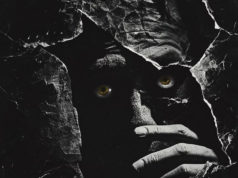For most of us, the events that unfolded at the U.S. Capitol on Jan. 6 elicited a mix of shock and horror. The breach of the “halls of democracy” by frenzied conspiracy theorists and self-described “militia” types was undoubtedly a giant institutional security failure, but the insurrection also highlights a separate fundamental failure: that of our current media ecosystem. It lays bare the vulnerability of a system that can not only allow but also perpetuate such a ceaseless campaign of misinformation, one that, perhaps inevitably, can culminate in a massive break from reality, resulting in such a brazen attack on our democratic institutions.
Like many, singer-songwriter Matthew Broyles watched the chaos play out on TV and was motivated to respond somehow.
“What can I do?” the Fort Worthian recalled asking himself. “We’re locked down in a pandemic with a maniac president and a bunch of zombies outside trying or inadvertently bringing the world down. You find yourself in that moment and think, ‘Well, I have to do something.’ And the only tool I have at my disposal is music. I have words and I have music, and that’s all I’ve got.”
His response comes in the form of The King in Yellow. Released Monday, it is the sophomore album by Ah Pook the Destroyer, Broyles’ transatlantic collaboration with Serbia-based composer Paul Shapera. Through 11 tracks, the duo trade songs to recount a story about a devious monarch who purposefully lures his followers into madness. The tale weaves threads of modern Trumpism and the associated loony QAnon conspiracy theory with elements of a fable from 19th-century literature.
“I was just thinking I was going to make a political record because this shit is freaking me out,” Broyles said. “It was Paul who suggested, ‘What if we give it a supernatural element and make it a little more spooky?’ And I think that was the right way to go. He’s a little more oblique about it, and I’m a little more direct, and betwixt us we kind of find the right balance.”
Literary influence has been a common feature for Ah Pook the Destroyer. The duo’s bizarre name itself is derived from a spoken-word piece by famed beat poet and drug enthusiast William S. Burroughs which warns of the coming of an imagined destructive deity named Ah Pook. The King in Yellow borrows from 19th-century author Robert W. Chambers’ short story collection of the same name and leans into the mythos created therein, with its mystical, hallucinatory elements that share commonalities with the work of H.P. Lovecraft (whose own story was the inspiration behind Ah Pook’s debut album, The Silver Key, in 2012). Haster, a prophetic character, uses the performance of a play to drive those in attendance crazy. The parallels between this mythological figure and the former reality star that recently befouled the Oval Office with his legions of reality-divorced followers are too obvious to ignore. With today’s media environment, especially with social media, a modern-day Haster can spread his madness practically instantaneously and ubiquitously.
With Shapera living for the last decade in Serbia, The King in Yellow was recorded remotely by file sharing between the two over the last handful of months.
“The fun thing about [the long-distance working relationship] is that he’s in a different time zone,” Broyles said, “so I can send him something before I go to bed at night and then wake up in the morning, and he’s already sent the parts he’s added on top.”
The music acts as a soothing lullaby to accompany the story’s tragic descent into madness. Elements of acoustic folk, prog, art, and even rock opera (a forté of Shapera’s) blend into a soft bed behind the narrative that is simultaneously both calming and unsettling. The juxtaposition behind the music and the lyrical content works to highlight the inherent contradiction of insanity. Imagine Pink Floyd’s The Final Cut run through a Midnight Oil funnel, coated with a light egg-wash of Cat Stevens, and then baked to the golden crisp of an early ’90s alt-rock concept album.
“I think there’s something about being committed to your weirdness,” Broyles said about the interesting musical corners Ah Pook resides in. “There’s something about it that’s attractive to certain people. It’s certainly attractive to me. I’m relentlessly drawn to that.”
Allowing that Ah Pook’s sound isn’t necessarily “what the kids are listening to these days,” Broyles feels the album chronicles a tale they need to hear and can derive something from all the same.
“If you’re being honest and telling a story that’s compelling, it doesn’t really matter if it’s cool,” he said. “There are times in history where you just kind of have to say, ‘This is where we’re at.’ If the people who do hear it get it or have some idea that comes from it, I think that’s worth something. I’m not saying anything about trying to change people’s minds but just to crystalize it. There’s a lot of people who know shit’s fucked up but don’t know how to say it. To have someone say, ‘Thank you for saying that. I feel that way but haven’t been able to put it in words’ — those are the best compliments I can get about anything I put out.”












